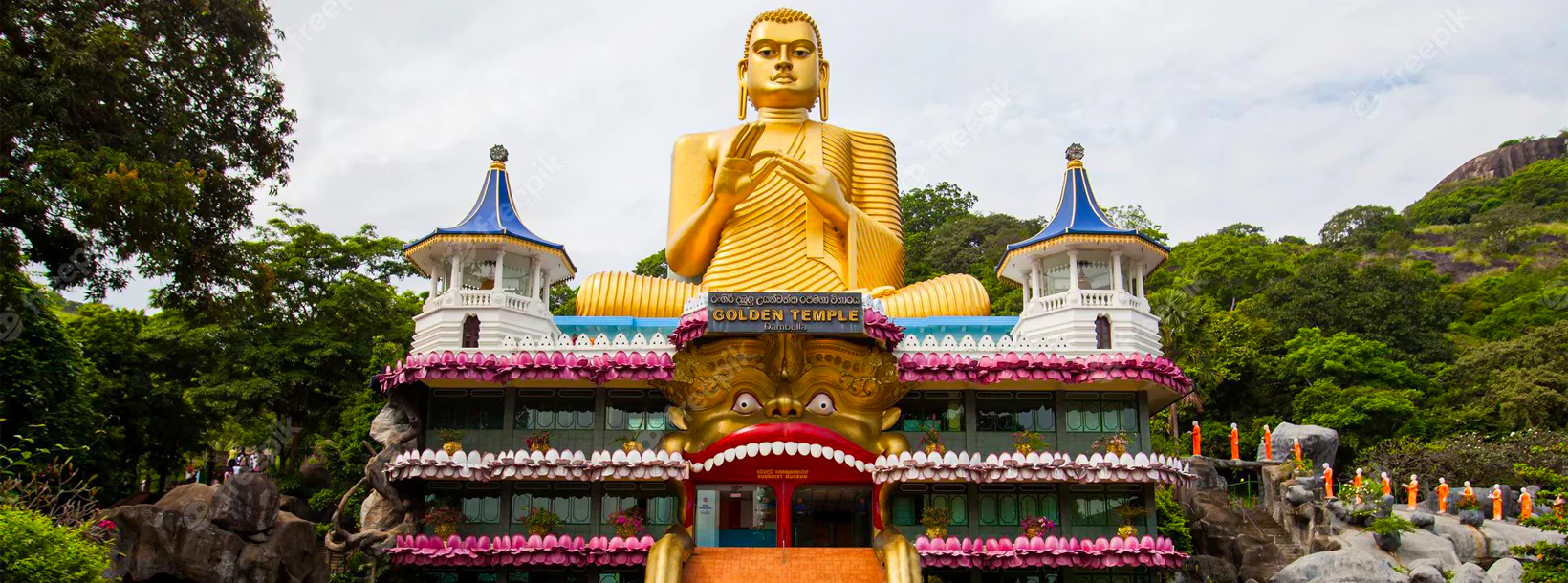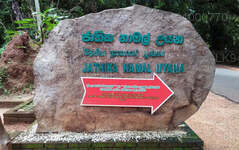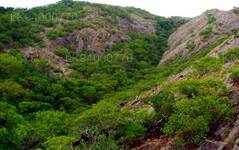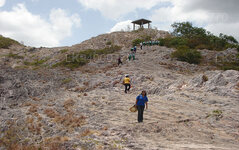
Dambulla City
Journey into the heart of cultural splendor in Dambulla, where ancient history meets modern exploration. Uncover the marvels of the UNESCO-listed Dambulla Cave Temple, meander through vibrant markets, and savor the unique fusion of tradition and innovation in this enchanting Sri Lankan town.
Namal Uyana
The Jathika Namal Uyana in Sri Lanka is the largest ironwood forest and pink quartz mountain in Asia. The Ironwood Tree is endemic to Sri Lanka and the replanted forest is over 260 acres in extent. According to archeological researchers findings, the pink quartz in this historical place has a history of more than 550 million years. Naamal Uyana is an extremely rare forest replanted with Ironwood trees in the 8th Century AD commenced during the starting from King Devanampiyathissa and ending with king Dappula IV. Namal Uyana had been a sanctuary for Buddhist monks during King Devanampiyatissa reign in the 8th century. Later it had been used as a prison camp where the punishment was to plant Na trees. King Dappula period declared it as a human sanctuary. This unique natural place has been brought forward to the attention of the world almost 15 years before, by a Buddhist monk, Venerable Wanawasi Rahula Thero.
Jathika Namal Uyana is situated in 7kms from the Madatugama junction of Colombo-Anuradhapura highway in Sri Lanka. Iron Wood forest is a unique forest in Sri Lanka where the Iron Wood trees dominate the vegetation of the 260 acres of forest. Namal Uyana situated in the Dry Zone area in Sri Lanka. In Na tree forest or Namal uyana protects the hot sunlight give its shade to all the small medicinal plants living in its shades and makes the feeling to those who visit Namal Uyana that you are in a cool area, like the coolest place in Sri Lanka. Botanically, the NA tree is called Mesua Ferara and in English, it is called the Iron Wood Tree. The whole part of Na is also using as herbal meditation in Sri Lanka. This significant tree is native to Sri Lanka, India, Malaysia, Buruma, Thailand, and Papua Neviginnia. This was named the national tree of Sri Lanka. Buddhist and other religions have a great religious value for Na.
According to the biologists the importance of the Namal Uyana is that it has 102 species of tropical plants of which 82 are herbal plants within 260 acres of garden and the forest bordering it. 18 bird species and a number of mammals including elephant, leopard, monkey, and deer also dwell in the park and its proximity.
Na forest and Biodiversity is not the only distinction of the place. The Rose Quartz mountain range in Namal uyana is the largest Rose Quartz mountain range in Asia. Though Namal Uyana, recently declared a National Heritage site, under the Department of Wildlife Conservation (DWLC) has become popular among Sri Lankans in recent years. The row of 7 mountains is situated over above 180 to 300 meters above the sea level. According to archeological research findings, pink quartz is having a history of more than 550 million years. At an overall view, the top portion appears misty clouded, and with its pink color mixed with the white mist, it will give you a stunning look that differentiates this mountain from others. And if you go deeper to explore the diversities this range of mountains are having it will be an amazing experience.
There are some ancient places show long histories of Jathika Namal Uyana.
- Purana Namal Seya.
- Bodhigaraya.
- Pilimageya.
- Awasageya.
- Simamalakaya.
- Padhanagara.
- Galphana.
- Galpathraya.
- Asanagaraya.
- Sakman Maluwa.
- Pabbatha Viharaya.
The Namal Uyana is oriented with a variety of important values, such as, historical, geographical, artistic and blessed with abundant natural resources.
Namal Uyana Highlights
Namal Uyana Sri Lanka
Namal uyana protects the hot sunlight give its shade to all the small medicinal plants living in its shades and makes the feeling to those who visits Namal Uyana that you are in a cool area, like the coolest place in Sri Lanka.
Natural Water in Namal Uyana
Natural water with its complete purity is another blessing of this forest. The water flows derives from pink quarts and divert into 3 directions inside the forest.
When you pass through the entrance of this divined land you will see a small, but miraculous waterfall (which is aged more than 1000 years) flowing into a Pathra? (Singhaleese word) a type of water drinking cup, traditional with a different shape made in clay used by ancient Buddhist monks, and the water fills the cup overflows and diverts to one of the 3 directions mentioned earlier. But when the water flows from a reasonable height, the water will be vapoured (absorbed by air). But, here you can find this water start flowing one kilometer away in a place called Urankotte.
About Matale District
Matale is a town in the hill country of Sri Lanka. The Knuckles Mountain Range is a special landmark of Matale.The Matale administrative district also contains the historic Sigiriya rock castle, Aluvihare Temple and Dambulla Cave Temple . Surrounding the town are the Knuckles foothills called Wiltshire. It is a mainly agricultural area, where tea, rubber, vegetable and spice cultivation dominate.
The Aluvihare Temple, on the North side of the town, is the historic location where the Pali Canon was first written down completely in text on ola (palm) leaves. Situated near Aluvihare are numerous monastery caves, some of which exhibit fine frescoes.
About Central Province
The Central Province of Sri Lanka consists primarily of mountainous terrain. The province has an area of 5,674 km², and a population of 2,421,148. Some major towns include Kandy, Gampola (24,730), Nuwara Eliya and Bandarawela. The population is a mixture of Sinhalese, Tamil and the Moors.
Both the hill capital Kandy and the city of Nuwara Eliya are located within the Central Province as well as Sri Pada. The province produces much of the famous Ceylon tea, planted by the British in the 1860s after a devastating disease killed all the coffee plantations in the province. Central Province attracts many tourists, with hill station towns such as Kandy, Gampola, Hatton and Nuwara Eliya. Temple tooth or Dalada maligawa is the main sacred place in Centrel province.
The climate is cool, and many areas about 1500 meters often have chilly nights. The western slopes are very wet, some places having almost 7000 mm of rain per year. The eastern slopes are parts of the mid-dry zone as it is receiving rain only from North-Eastern monsoon. The Temperatures range from 24°C at Kandy to just 16°C in Nuwara Eliya, which is located 1,889 m above sea level. The highest mountains in Sri Lanka are located in the Central Province. The terrain is mostly mountainous, with deep valleys cutting into it. The two main mountain regions are the central massif and the Knuckles range to the east of Kandy.















